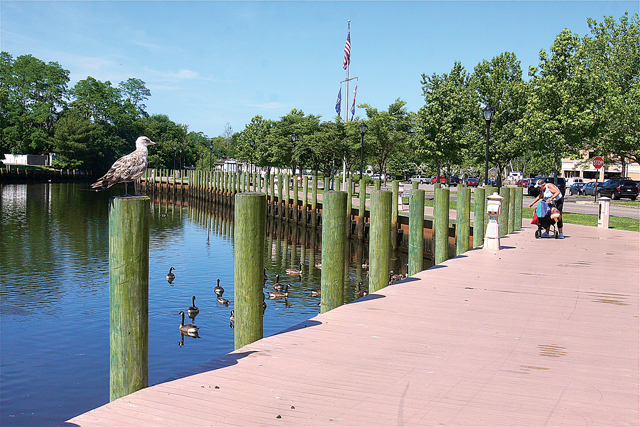Price of pedestrian bridge linking Riverside, downtown doubles


A proposed pedestrian crossing over the Peconic River, linking county parkland in Riverside to the downtown Riverhead parking lot, will cost between $3.28 million and $3.9 million, according to a feasibility study done for Southampton Town.
That’s more than double the amount the town had sought in state grants to fund construction of the project, according to Legislator Jay Schneiderman (I-Hampton Bays), who is a candidate for Southampton Town supervisor this fall.
“Originally, we were anticipating around $1 million to $1.5 million, which we thought might be possible in terms of securing grants,” Mr. Schneiderman said Monday at a meeting of the town’s Riverside economic development committee.
“But $3 million is significantly more, it’s double. We could try to get $3 million in grants, but it will be harder.”
Southampton Town hired engineering and design consultant AECOM last year to conduct the study.
Southampton deputy supervisor Frank Zappone said the town will hold off a year on applying for the grant. He said it’s hoped that by then, the park proposed for the Riverside portion will be more developed, making the project more desirable.
Instead, he said, the town will seek approximately $200,000 in state grants for design of the park.
Mr. Schneiderman first proposed the idea of a walking bridge over the river in 2013 during a presentation to the Flanders, Riverside and Northampton Community Association.
Since then, the Southampton and Riverhead town boards have both passed resolutions supporting the project, although Riverhead’s board was split, with Councilman George Gabrielsen and Supervisor Sean Walter opposed.
Southampton officials believe the bridge can be a key to revitalizing Riverside and creating a synergy between Riverside and downtown Riverhead.
The 14-acre county park in Riverside to which the bridge would connect currently comprises mostly woodland, although Southampton officials have received county grants to develop it with walking trails and a limited number of parking spaces.
One reason for the higher-than-expected cost estimate is both towns’ desire to ensure that boats using the river will be able to pass under the bridge.
The AECOM study found that in order to meet that requirement, the bridge will need an 18-foot vertical clearance at mean high tide and a 40-foot horizontal clearance, according to Christine Fetten, Southampton’s director of municipal works.
Another reason for the higher cost was the need to make the bridge handicapped accessible — as is required by law — without having to install an elevator.
“So it became pretty long and sloping just to get up to that 18-foot clearance height to allow both to get through,” Ms. Fetten said.
The AECOM study presented two alternative approaches, Ms. Fetten said.
Option A, at 755 feet long with 5 percent slopes, would cost an estimated $3.9 million.
Option B is shorter, at 661 feet, with 8.33 percent slopes and an estimated cost of $3.28 million.
To put the slope figures in perspective, a typical roadway crossing has 2 percent slopes, she said.
A drawing of the proposed bridge shows it first heading east, near the Long Island Aquarium, then looping west and traveling along the riverfront until it reaches height of 18 feet, at which point it crosses over the river far west of the access point on the Riverhead side.
Council members Brad Bender and Christine Scalera were the only Southampton Town Board representatives at Monday’s meeting.
Mr. Schneiderman asked if either option is actually cheaper than installing an elevator.
“The river is only about 80 to 100 feet across,” he said. “So we end up with 600 to 700 feet because we’re trying to avoid the elevator, which is cost-prohibitive. But hundreds and hundreds of extra feet is more expensive than the elevator.”
Mr. Zappone said that because the elevator would be in a floodplain zone, additional work would be required to protect it. He also noted that an elevator would come with significant long-term maintenance costs.
He added that some of the parameters within which the town is working were prerequisites to secure project support for the project from Riverhead Town officials.
Mr. Zappone said Riverhead did not want an elevator on its side of the river and wanted to make sure boat traffic would not be impeded by the bridge.
Mr. Schneiderman said it was difficult to convince the county to authorize $4 million in funding for the planned Riverside traffic circle job.
Given that, he said, “trying to get $3 million for a bridge is not going to be easy. We’d better be sure both sides want this before we fight for $3 million.”
Still, he said, he doesn’t want to rule out the project.
“This could be a real tourist attraction,” he said.








